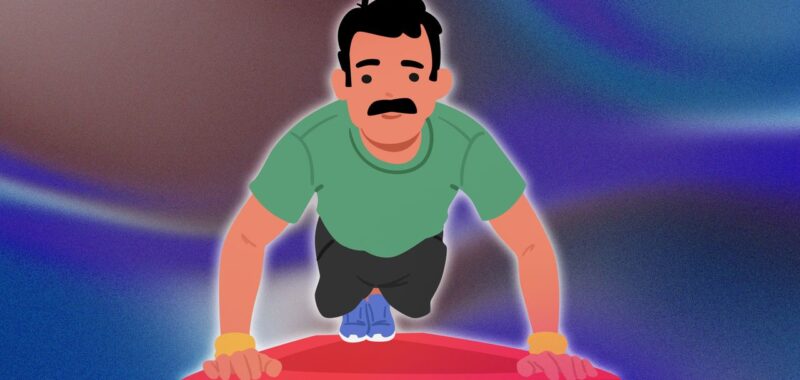These are:
Mitochondrial Biogenesis: “Exercise stimulates the production of new mitochondria, increasing energy metabolism and reducing oxidative stress, key to slowing aging at the cellular level,” says Patel.
Insulin Sensitivity: “Regular physical activity improves the body’s responsiveness to insulin, aiding blood sugar regulation and reducing the risk of type 2 diabetes, a condition linked to accelerated aging.”
Inflammation Reduction: “Chronic inflammation is a known driver of aging and disease. Exercise modulates inflammatory pathways, reducing markers like CRP and IL-6.”
Neuroprotection: “Physical activity increases brain-derived neurotrophic factor (BDNF), supporting neuronal health and cognitive function, essential for reducing dementia risk and maintaining mental acuity,” Patel says. Translation: it’s good for your brain, too.
Can exercise ever be harmful?
We’ve all finished a run and felt like an eighty-year-old whose knees and lungs are crumbling. Is that still an indicator of health? There’s a joke among some athletes—particularly climbers—that your chosen sport advances you ahead of other people. Not in fitness, but in age, with wrists, backs, ankles, elbows all feeling the strain of repetitive movement.
“There’s a paradox,” says Patel. “Exercise itself triggers inflammation, and chronic inflammation is a fast-track to aging.” The key is to find the Goldilocks spot—the just-right amount that stimulates adaptation without excessive wear and tear.
Exercise is meant to cause some muscle damage. It’s how we get stronger, and inflammation is the process by which the damaged areas are sent all of the building materials they need to repair themselves and are protected while this happens. But you’ve probably heard that inflammation is bad, leading to all sorts of worrying things, including cancer. So what’s the solution?
“How do you know if you’re hitting the Goldilocks zone?” asks Patel. There are a few ways. You can get a kit to track your biological age, and dial back your workouts if the results are concerning. You can also track heart rate variability, with low HRV indicating poor recovery. Tracking your VO2 Max—a test of the maximum amount of oxygen your body can use during exercise—works in the same way. Patel calls it “the ultimate predictor of longevity, indicating cardiorespiratory fitness.”
If your levels in any of these tests are higher than you’d like, scale it back. For best results, you might work with a physiologist to find out what works for you.
Whittaker has a final hack: sleep. “It’s the most important recovery tool by a country mile,” he says, above and beyond cold plunges, red light therapy, Theraguns and all the other trendy gadgets and hacks. Feeling sore? Sometimes, a good night’s rest is all you need.
How can I become more active in daily life?
Hitting the gym or the running track a few times a week is great, and will have huge benefits for your well-being and chances of living a long life. But moving more isn’t just about doing so in siloed time slots. You’ll also want to move more throughout the day. Koch has some recommendations:
Limit time being sedentary
“Consider using a standing desk or exercise ball to replace your chair and regular ‘movement snacks’ to reduce the long hours sitting at a desk everyday,” Koch suggests.

